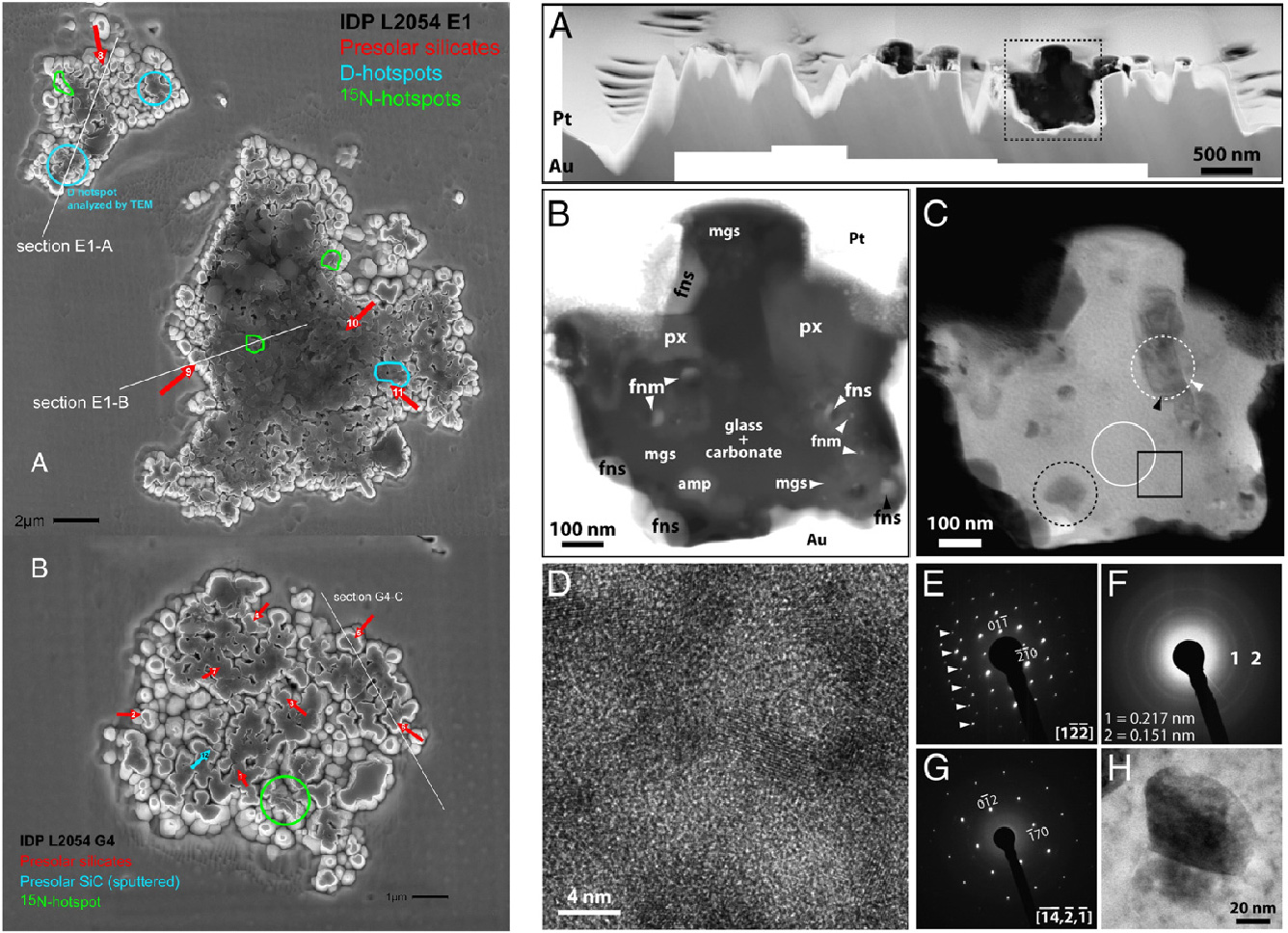
Analysis of the nanoscale structure of an interplanetary dust particle (IDP) from Comet 26P/Grigg-Skjellerup.
The left figure contains secondary electron images of images of two IDPs labeled ‘E1-A’ and ‘G4-B’. The IDPs were analyzed for their isotopic composition using secondary ion mass spectrometry. Some of the isotopically anomalous areas were extracted for detailed analysis using transmission electron microscopy (TEM) and are indicated by the white lines. One such region from the deuterium(D)-rich part of the IDP is revealed by TEM in the right figure. Panel (A) shows the overall section with the IDP sandwiched between Pt and Au (used for sample preparation). Panel (B) shows an image of the D hotspot visible in the left figure and reveals the fine-grained character of this aggregate material. Silicate materials occur together with metal, sulfides, and carbonates. Understanding these details help us piece together the origins of these IDPs and the comets in which they occur. Information on the other parts of both figures and details on this study can be found in Busemann et al. (2009) Earth and Planetary Science Letters 288, 44-57.


